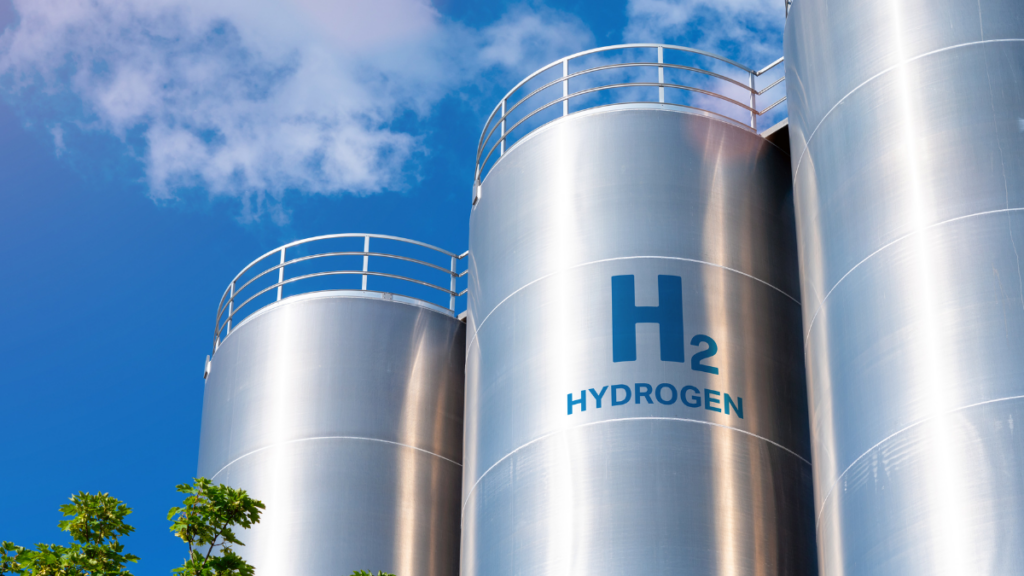
HALTON HILLS – The Ontario government is investing $5.9 million in nine new projects that will integrate hydrogen into the province’s electricity grid. This funding is through the Hydrogen Innovation Fund which supports projects that pave the way for the production of reliable, affordable and clean electricity from hydrogen to help power the province’s growth.
“Our government is building new electricity generation and storage to power the next major international investment, the new homes we are building and industries as they grow and electrify,” said Todd Smith, Minister of Energy. “Natural gas currently performs a critical role keeping the lights on during periods of peak demand, and we are investing now in new technologies like hydrogen that could help meet this demand going forward.”
As part of today’s funding, Atura Power is receiving $4.1 million to blend hydrogen with natural gas to produce electricity at Halton Hills Generating Station (HHGS) making it the largest electricity-based, grid-connected, low-carbon hydrogen blending project in Canada’s history. The Niagara Hydrogen Centre will utilize excess water that would otherwise have been spilled over Niagara Falls to create clean electricity that will be used to produce clean hydrogen for the project.
The eight other projects receiving funding include:
- Capital Power is receiving $206,300 to study the feasibility of blending hydrogen with natural gas (between 5 per cent to 15 per cent hydrogen) at their existing Brampton, Windsor and Newmarket generation facilities.
- Capital Power is also receiving $150,000 to study the feasibility of producing and storing low-carbon hydrogen, produced from wind generation, to fuel a hybrid hydrogen-methane turbine at their Goderich location.
- HydroMéga Services in Cochrane is receiving $100,000 to study the feasibility of upgrading an existing 27-megawatt natural gas facility to include renewable generation, low-carbon hydrogen production and storage.
- York University is receiving $38,000 to study the feasibility of retrofitting existing gas turbine generators to blend hydrogen with natural gas to generate electricity.
- York University is also receiving $90,000 to model and analyse the potential of installing low-carbon hydrogen facilities across Ontario, including costs and sizing.
- Western University is receiving $498,000 to develop a demonstration site, which will test solar-generated hydrogen and biogas-generated hydrogen to assess the environmental benefits of each.
- Volta Energy in Toronto is receiving $491,352 to assess how reversible solid oxide hydrogen cells technology can help provide a pathway for hydrogen integration into the electricity grid.
- The Transition Accelerator in Hamilton is receiving $101,205 to research the economic readiness of the Hamilton region to become a hub for hydrogen investment.
“Today’s announcement builds upon our government’s low-carbon hydrogen strategy – a plan that diversifies our energy supply to keep energy costs down while also reducing greenhouse gas emissions,” said Andrea Khanjin, Minister of the Environment, Conservation and Parks. “By investing in these innovative clean energy projects, Ontario is supporting economic growth and securing environmental benefits for future generations.”
“Decarbonizing Ontario’s electricity system and economy will require contributions from new and emerging resources,” said Lesley Gallinger, President and CEO of the Independent Electricity System Operator (IESO). “The IESO is looking forward to tracking the results of the Hydrogen Innovation Fund projects to determine hydrogen’s viability as a grid resource to support reliability, affordability and sustainability.”
As part of the province’s Low-Carbon Hydrogen Strategy, Ontario established the Hydrogen Innovation Fund in February 2023 which will invest $15 million over the next three years to kickstart and develop opportunities for hydrogen to be integrated into Ontario’s clean electricity system, including hydrogen electricity storage.
Quick Facts
- According to the experts at Ontario’s Independent Electricity System Operator (IESO) hydrogen could play a critical role in a zero-emissions electricity grid. The IESO’s Pathways to Decarbonization Report found the province could require up to 15,000 MW of hydrogen generation capacity by 2050 to meet peak demands, replacing the role currently played by natural gas generation.
- Low-carbon hydrogen is a key component of Ontario’s low-carbon future. It can be used to generate electricity or power vehicles, businesses, industries and heat homes, while producing little to no greenhouse gases (GHG) or other pollutants.
- By 2050, the hydrogen economy could create over 100,000 jobs across the province, while reducing greenhouse gas (GHG) emissions by 50 megatonnes per year. This reduction in GHG emissions would be equivalent to about a quarter of Ontario’s 2005 emissions or removing 15 million cars off the road.
Quotes
“Leveraging Ontario Power Generation’s clean electricity allows the province to maximize hydrogen’s economic and environmental benefits. It’s another example of how Ontario’s low carbon grid provides a valuable head start on the road to net zero.”
– Ken Hartwick
President and Chief Executive Officer, Ontario Power Generation
“Natural gas generation continues to play a critical role, providing system reliability and acting as an enabler of renewable generation, helping us progress toward net zero. Blending green hydrogen from our Niagara Hydrogen Centre with natural gas at the Halton Hills Generating Station will allow us to produce cleaner electricity at an important and high-performing station.”
– Shelley Babin
President and Chief Executive Officer, Atura Power





